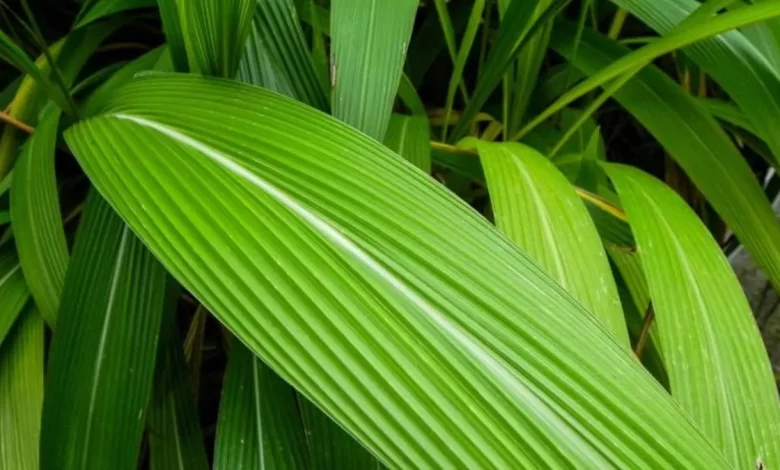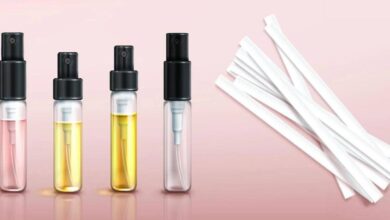The Versatile Uses and Benefits of Palm Grass

Palm grass (Setaria palmifolia) is a perennial tropical grass recognized by its large, palm-shaped leaves. It is also known by names like broadleaf bristlegrass and palmgrass. Palm grass belongs to the Poaceae grass family and is most closely related to other Setaria species like foxtail millet.
This attractive grass is native to parts of Asia and the Pacific islands. Its range stretches from China and Taiwan south to Malaysia and Indonesia. Palm grass is also found in the Philippines, New Guinea, and northern Australia. It thrives in tropical forests and disturbed areas with ample moisture and shady conditions.
Palm grass has long been used by indigenous cultures for food, medicine, and ornamental purposes. All parts of the plant find some use. Read on to learn about the many traditional and modern applications of this multi-functional tropical grass.
Table of Contents
What is Palm Grass?
Palm grass is a long-lived perennial grass that forms large clumps or bunches up to 5 feet (1.5 m) tall. Its most recognizable feature is the long, pleated foliage that resembles palm leaves, giving rise to both the common and scientific name.
The elongated leaves are 1-3 feet (40-80 cm) long and up to 5 inches (12 cm) across. They emerge with a folded, fan-like appearance. The leaves are green with rough margins and finely pointed tips. Tiny hairs cover the undersides.
During summer months, palm grass sends up slender, branching flower stalks up to 20 inches (50 cm) tall. The tiny flowers are arranged in oval or lance-shaped spikelets about 0.1 inches (2-4 mm) long. When mature, they produce tiny pale brown seeds around 0.08 inches (2 mm) in size.
Also Read: How Jack Beans Can Improve Your Health
Traditional Uses of Palm Grass
Palm grass has served many purposes in the regions where it grows natively. Indigenous peoples have traditionally used it for food, medicine, ornamental purposes, and more.
Food Uses
The seeds, shoots, and leaves of palm grass are edible. The small seeds can be boiled or roasted then used a substitute for rice or other grains. Extracting the tender white hearts of young shoots provides a vegetable that can be eaten raw or cooked.
Throughout Malaysia and Indonesia, the young palm grass plants are harvested whole and served raw as a side dish or cooked into rice dishes and stews. All parts are collected when tender and prepared properly to remove any bitterness before eating.
Medicinal Uses
In traditional medicine systems, palm grass treats a spectrum of health complaints. The Mek people of New Guinea drink juices to treat irregular menstruation. Crushed leaves are applied to skin disorders like acne to reduce inflammation in Malaysian herbal medicine.
Palm grass also plays a role in managing measles infections, with the infusions used to reduce fever and rashes. The plant alleviates oral health issues as well, treating tooth decay and toothaches in Oceanic cultures. Palm grass remedies can be prepared from the leaves, roots, or seeds.
Ornamental and Other Uses
With its eye-catching foliage, palm grass thrives as a houseplant or garden ornamental. Its tolerance for shade makes it suitable for tropical landscaping in areas with partial sun. Palm grass also serves as a nursery shade plant for more delicate seedlings.
Interestingly, the number of folds on the leaves is thought to indicate the number of typhoons approaching in Taiwan folklore. In New Guinea, palm grass has ritual importance for activities like hunting, games, and countering spells or curses.
Also Read: Papaturro: A Comprehensive Guide to the Nutritious Central American Fruit
Palm Grass as a Medicinal Herb
While research is still limited, early studies reveal promising anti-inflammatory and antimicrobial actions from compounds in palm grass. It continues to be used in traditional medicine systems throughout its native range.
Menstrual Issues
Palm grass infusions are used to provide relief from menstrual irregularities and pain. For painful periods, it is believed to have antispasmodic effects to relax uterine cramps. Palm grass also promotes more regular cycles.
The high mineral content of palm grass, including iron, magnesium, and calcium, helps replenish what is lost during menstruation. More research is needed, but traditional use points to palm grass as an ally for women’s reproductive health.
Skin Disorders
Crushed palm grass leaves are applied topically in Indonesian and Malaysian herbal medicine to treat all kinds of skin complaints. Properties of palm grass help reduce acne inflammation, heal wounds more quickly, and soothe irritation from rashes or skin infections.
Early lab research indicates antifungal potential against common skin pathogens like Candida albicans. Palm grass extract also shows free radical scavenging abilities important for skin health and healing.
Measles Relief
In the Philippines, palm grass infusions are used to alleviate symptoms of measles infections. It helps bring down fevers, soothes associated coughs, and reduces the severity of rashes.
Research does suggest antimicrobial actions from palm grass compounds against viruses like herpes simplex. While specific effects on the measles virus are unknown, traditional use indicates benefits for this troublesome childhood infection.
Tooth and Mouth Problems
Palm grass serves as a home remedy for tooth decay and pain across Oceanic cultures. It is believed to fight oral bacteria that cause cavities and gum disease. Rinsing with palm grass infusions may also speed healing of mouth sores and ulcers.
These traditional uses align with preliminary research showing antimicrobial actions from palm grass against periodontal pathogens like P. gingivalis. More studies are needed, but its oral health benefits show promise.
Also Read: The Complete Guide to Didier’s Tulip: Scientifically as Tulipa Gesneriana
Culinary Uses of Palm Grass
In tropical regions of Asia and the Pacific islands, palm grass is collected for use as a nutritious food source. Both the seeds and leaves are edible and nutrient-dense.
Seeds as Rice Substitute
The small seeds of palm grass can be boiled or roasted and then used as a substitute for rice or other grains. They are nutty and mild in flavor. Palm grass seeds are gluten-free, high in B vitamins, and a source of vegetarian protein.
Using palm grass seeds extends food resources in times of shortages. The seeds also provide variety to the diet and important nutrients like magnesium, phosphorus, iron, and zinc. Simply boil until softened then use them as you would rice or couscous.
Shoots and Leaves as Vegetables
The young leaves and pale stem shoots of palm grass are edible and make nutritious cooked greens. They can be harvested regularly as the plant continually produces new shoots.
Both the leaves and tender shoots are mild tasting and work well in stir fries, stews, and soup. Briefly blanchinghelps reduce any bitterness. Their earthy, spinach-like flavor complements many savory dishes.
In Malaysia and Indonesia, very young palm grass plants are plucked whole and served raw as ulam – a customary side salad or condiment eaten with rice. The fresh, tender palm grass adds great texture and nutrients.
Also Read: Borojo: The Exotic Fruit with Untapped Health Potential
Other Interesting Uses of Palm Grass
Beyond food and medicine, palm grass has served many additional purposes in tropical regions of Asia and the Pacific islands. Here are some of the more unique uses of this versatile plant.
Ornamental Plantings With its gracefully arching pleated leaves, palm grass makes a beautiful ornamental plant for partial shade gardens in tropical climates. It also works well indoors as a houseplant. Palm grass adds texture and a tropical flair to plantings.
Shade Provider
Due to its tolerance for shade itself, palm grass is useful for providing dappled shade to more light-sensitive plants. It is used to shelter seedlings in nursery settings so they can become acclimatized before being transplanted to full-sun areas.
Typhoon Forecaster
An intriguing folk belief in Taiwan holds that the number of horizontal folds or pleats in the leaves predicts the number of typhoons that will affect the region in the coming months. More folds indicates a more active typhoon season ahead.
Magical Protection
Indigenous cultures in New Guinea traditionally use palm grass as a good luck charm for activities like hunting, fishing, and gambling. It is also believed to provide protection from curses and counter any black magic spells that target an individual.
Also Read: Marula Fruit Magic: Boost Your Health Naturally
Conclusion
Palm grass has lived up to its name as a remarkably versatile plant that serves many uses across its native tropical range. Valued as both a nutritious food source and healing medicine, it also lends beauty as an ornamental while providing valuable shade.
Though relatively unknown outside tropical regions, palm grass shows great promise as a globally cultivated food and medicinal crop. Its adaptability to warm climates and shady conditions make it suitable for gardens from Florida to Australia and beyond. Discover more about this multi-use plant.
FAQs about Palm Grass
Q: What parts of palm grass can you eat?
A: The seeds, young shoots, leaves, and stems are all edible when harvested while still tender. Seeds can be boiled and eaten like rice. The shoots and greens are good cooked or raw.
Q: Does palm grass have health benefits?
A: Yes, palm grass has been used traditionally to treat menstrual issues, skin problems, measles, toothaches, and more. Compounds may have anti-inflammatory, antimicrobial, and antioxidant effects.
Q: How do you use palm grass medicinally?
A: Palm grass remedies usually involve drinking infused teas made from the leaves or roots. Crushed leaves are also applied topically to treat skin complaints. Extracts in creams and soaps also harness its healing properties.
Q: Can palm grass grow indoors or outdoors?
A: Palm grass grows well both as a houseplant indoors and an ornamental plant outdoors in tropical climates. It prefers shady, moist locations in either setting.
References:
Chang, F. R., Yen, C. T., El-Shazly, M., Yu, C. Y., Yen, M. H., Shih, Y. C., … & Wu, Y. C. (2014). Chemical constituents from Setaria palmifolia (Poaceae). Biochemical systematics and ecology, 54, 306-309.
Jew, A., Abu Bakar, M. F., & Prasad, K. N. (2020). Setaria Palmifolia (Poaceae), a Mini Review of its Traditional Uses, Phytochemistry, Pharmacology, and Toxicity. Pharmacognosy Reviews, 14(28), 57.
Juliano, A. B. (1985). Rice: chemistry and technology. Amer Assn of Cereal Chemists.
Lim, T. K. (2012). Edible medicinal and non-medicinal plants (Vol. 2, pp. 490-491). Springer Science & Business Media.
Ming, L. C. (1999). 32 Setaria palmifolia (POACEAE). In Mangrove and Coastal Environment of Selangor, Malaysia (pp. 356-358). Universiti Putra Malaysia Press.
Parrotta, J. A. (2009). Healing plants of peninsular India. CABI.
To Know more visit the below sources:
- https://en.wikipedia.org/wiki/Setaria_palmifolia
- https://www.itis.gov/servlet/SingleRpt/SingleRpt?search_topic=TSN&search_value=41262#null
- http://www.hear.org/pier/species/setaria_palmifolia.htm
- https://npgsweb.ars-grin.gov/gringlobal/taxon/taxonomydetail?id=33832
- https://pfaf.org/user/Plant.aspx?LatinName=Setaria+palmifolia
- https://www.cabi.org/isc/datasheet/119079
- https://gd.eppo.int/taxon/SETPA
- http://www.theplantlist.org/tpl/record/kew-442588
- https://keyserver.lucidcentral.org/weeds/data/media/Html/setaria_palmifolia.htm
- http://www.stuartxchange.com/Agusais.html
Disclaimer:
This article is written for basic and general informational purposes only. The Statements contained here have not been evaluated by the FDA and neither the efficacy of these products has been confirmed by FDA-approved research. All information presented here is not meant as a substitute for or alternative to information from health care practitioners.
There’s no guarantee of specific results and the results can vary. Users must not view the content as medical advice in any way. Users are also required to ’NOT SELF-MEDICATE’ and always consult their health care professional before taking any medicines or undergoing any treatment. DivyaAyushCare and the author will not be responsible for any act or omission by the User arising from the User’s interpretation of the content.



